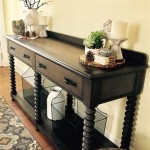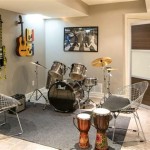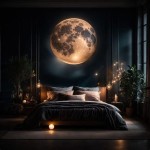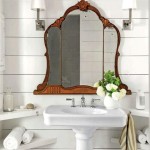How To Decorate a Room for a Teenage Girl
Decorating a room for a teenage girl involves a multifaceted approach, requiring consideration of personal preferences, functional needs, and aesthetic coherence. The objective is to create a space that reflects individuality, promotes comfort, and serves as a conducive environment for studying, relaxing, and socializing. Achieving this requires a deliberate planning process, careful selection of elements, and a methodical execution strategy.
Understanding Personal Preferences and Needs
The initial phase of room decoration necessitates a comprehensive understanding of the teenage girl's personal preferences, interests, and functional requirements. This involves open communication to ascertain her aesthetic inclinations, favorite colors, preferred styles (e.g., minimalist, bohemian, maximalist), and hobbies. Understanding these elements forms the foundation upon which all subsequent design decisions are based. It is important to consider not only current interests, but also potential future interests as decorating is an investment in time and resources. Consider elements that can be easily adapted or changed as tastes evolve.
Functional needs are equally critical. Does the room primarily serve as a sleeping space, a study area, or a social hub? The answers to these questions dictate the furniture layout, storage solutions, and overall organization of the room. If studying is a primary function, a dedicated workspace with adequate lighting and ergonomic furniture is essential. If socializing is important, consider incorporating comfortable seating arrangements and adaptable space configurations. Storage solutions should be tailored to accommodate clothing, accessories, books, and personal belongings, ensuring a clutter-free environment.
Color palettes should reflect the individual's personality and preferences. Soft, muted tones can create a calming and relaxing atmosphere, while brighter, more vibrant colors can inject energy and personality into the space. The utilization of complementary colors can enhance visual appeal and create a balanced aesthetic. Consider using a mood board to visualize the overall aesthetic and ensure that all elements complement each other.
Furthermore, the existing architecture of the room should be considered. The size of the room, the placement of windows, and the existing flooring can all influence design choices. A small room may benefit from light colors and minimalist furniture to create the illusion of more space, while a larger room can accommodate bolder colors and more substantial furniture pieces.
Strategic Furniture Selection and Placement
The selection and placement of furniture are crucial elements in room decoration. Each piece should be carefully chosen to fulfill a specific function and contribute to the overall aesthetic. Prioritize functionality and durability when selecting furniture, ensuring that it can withstand daily use and adapt to changing needs. The bed is typically the focal point of the room, so select a style that aligns with the overall aesthetic and provides adequate comfort.
A desk or study area should be ergonomically designed to promote good posture and minimize strain during extended study sessions. Consider an adjustable chair and a desk with adequate surface area for books, computers, and other study materials. Lighting is also crucial in the study area; a combination of task lighting and ambient lighting can create a comfortable and productive environment.
Storage solutions are essential for maintaining a clutter-free environment. Incorporate solutions such as wardrobes, drawers, shelves, and storage bins to organize clothing, accessories, and personal belongings. Vertical storage solutions, such as tall bookshelves, can maximize space utilization in smaller rooms. Under-bed storage containers can also provide additional storage space without taking up valuable floor space.
Furniture placement should be strategic to optimize space utilization and create a comfortable flow within the room. Avoid overcrowding the room with too much furniture; instead, prioritize essential pieces and arrange them in a way that allows for easy movement. Consider the placement of windows and doors when arranging furniture, ensuring that natural light is not obstructed and that pathways are clear.
Incorporating Personal Touches and Decorative Elements
Decorative elements are the final layer of room decoration, adding personality, character, and visual interest to the space. These elements should reflect the individual's interests, hobbies, and personal style. Wall art, photographs, posters, and other decorative items can be used to personalize the walls and create a visual focal point.
Textiles play a significant role in creating a comfortable and inviting atmosphere. Rugs, curtains, cushions, and throws can add texture, color, and warmth to the room. Choose textiles that complement the overall color palette and aesthetic of the room. Consider using layered textiles to add depth and visual interest.
Lighting is a critical element in any room design. A combination of ambient, task, and accent lighting can create a comfortable and functional environment. Ambient lighting provides overall illumination, while task lighting provides focused light for specific activities, such as reading or studying. Accent lighting can be used to highlight decorative elements or create a specific mood.
Plants can add a touch of nature and freshness to the room. Choose plants that are easy to care for and that thrive in indoor environments. Plants can also help to purify the air and create a more relaxing atmosphere. Consider using a variety of plant sizes and textures to add visual interest.
Finally, consider incorporating personal touches that reflect the individual's unique personality and interests. This could include displaying collections of favorite items, creating a gallery wall of photographs, or incorporating handmade crafts. These personal touches are what truly make the room feel like home.
Mirrors can be strategically placed to enhance the natural light and create an illusion of more space. Place mirrors near windows to reflect sunlight and brighten the room. A large mirror can also serve as a focal point and add visual interest.
Storage solutions can also be decorative. Wicker baskets, decorative boxes, and stylish shelves can provide functional storage while adding to the overall aesthetic of the room. Choose storage solutions that complement the overall style of the room and that are both functional and visually appealing. Consider incorporating floating shelves to maximize space and create a modern look.
The use of technology should also be considered. Integrate charging stations, media consoles, and other technology-related elements seamlessly into the room's design. Ensure that cables and wires are organized and hidden to maintain a clean and uncluttered appearance. Consider incorporating smart home technology to control lighting, temperature, and other aspects of the room.

Glam Teen Girl Bedroom Makeover Reveal Citrineliving

Reader Reno A Teen Girl S Bedroom Makeover For Under 500 Better Homes And Gardens

Amazing Teen Girl S Bedroom Makeover Decoholic

Teen Girl S Bedroom Makeover My Creative Days

Tiny Bedroom Makeover From Little Girl S Room To Teen Retreat We Are Scout

Pin On Home Decor

Glam Teen Girl Bedroom Makeover Reveal Citrineliving

Pin On Home Decor

13 Trendy Bedroom Decor Ideas For Teenage Girls To Match Every Aesthet Blisslights

25 Tips For Decorating A Teenager S Bedroom







